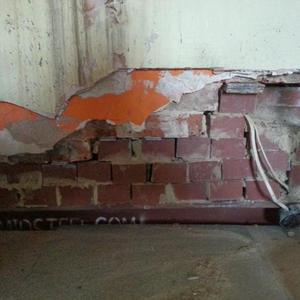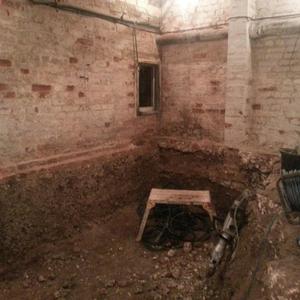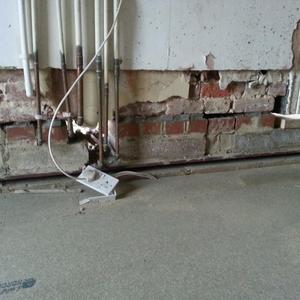Search results
-
M
What order do all these washers/threads/nuts go in?
There are actually 2 cone shaped seals supplied. I now have, rightly or wrongly, 1 above and 1 below the porcelain of the sink.- mcampster
- Post #12
- Forum: Plumbing and Central Heating
-
M
What order do all these washers/threads/nuts go in?
OK, I went away and redid it with a bit of plumbers mate and it seems to be OK. I actually had another leak at the actually overflow itself where the basin meats the overflow pipe. It seems to be OK now, but I'm intrigued to see if I can make it work with some of the other suggestions here so...- mcampster
- Post #11
- Forum: Plumbing and Central Heating
-
M
What order do all these washers/threads/nuts go in?
So you just put plumbers mate around the thread before tightening the nut?- mcampster
- Post #3
- Forum: Plumbing and Central Heating
-
M
What order do all these washers/threads/nuts go in?
I've attached a photo of my slotted waste. I just want to check I've got the order, and orientation correct: The basin itself would be between the black plastic 'washer?' and the soft, conical rubber seal. Is this what you would expect? The problem is, I am getting a leak from the overflow...- mcampster
- Thread
- Replies: 12
- Forum: Plumbing and Central Heating
-
M
Screed on split level floor
There will be time steps leading up. But the remaining vertical will be plastered and finished with a bannister rail. -
M
Screed on split level floor
We have just dug out our basement, with a split level where one area is 600mm above the other. We plan to put a glass balustrade up to partition the two areas apart. The 2 concrete slabs have been laid, and now the cavity membrane is on, but how will they pour the screed? Do I need to do some... -
M
Hairline cracks during/after substantial structural work
Those photos are after the needless have been removed. I guess he will pack it properly at some point , but should be not have done that already rather than leave it over Xmas like this? -
M
Hairline cracks during/after substantial structural work
Both the building inspector and my engineer seem to think my builder is competent and knows what he is talking about. This brickwork was the first thing that alerted me to the fact that maybe he wasn't. I'm only concerned about the end product - the brickwork will be covered up which is why... -
M
Hairline cracks during/after substantial structural work
I have no idea, but even to a novice it doesn't look great, hence why I put them up to see if that could be the problem. Do yo think this brickwork could cause the issues, or is it OK to have poor looking brickwork padded out with steel washers? -
M
Hairline cracks during/after substantial structural work
Surely the steel work is taking all the extra load, and not the older foundations? I'm hoping that my engineer has taken all this into account and doesn't turn out to be an issue. This is my gut feeling, but I'm worried that if I don't act now, if I do have problems later I won't have... -

Structural
- mcampster
- Album
- Comments: 0
-
M
Hairline cracks during/after substantial structural work
We've just had our ground floor opened up into 1 big room - 1 goal post steel formation on back wall, 1 picture frame formation on the middle wall and a large steel joining the two together. A considerable number of hairline cracks (30+) have started appearing on the floors above, and a... -
M
Plastering over Cavity Wall membrane
The general advice seems to be stud it - timber or metal. But why not go down the dot and dab insulated plasterboard approach? That way I could follow all the alcoves and protrusions. I'm sensing that this comes with its own downfalls so just trying to understand what they are? FYI the...- mcampster
- Post #9
- Forum: Plastering and Rendering
-
M
Plastering over Cavity Wall membrane
So how would you get around a vertical change in shape, e.g the wall jutting out half way down? I can see how you can use this method to go around the shape of the room, but when the wall juts out like a shelf halfway down (see pic) how would you do this?- mcampster
- Post #7
- Forum: Plastering and Rendering
-

Basement wall
- mcampster
- Media item
- Comments: 1
- Album: Foundations
-
M
Plastering over Cavity Wall membrane
Not the ceiling. And there will be 65mm screed + 70mm insulation covering the floor membrane, so if thats of any use, I can screw stuff into that I guess.- mcampster
- Post #5
- Forum: Plastering and Rendering
-
M
Plastering over Cavity Wall membrane
I guess its possible, but it would certainly not be easy. You can't screw into the cavity membrane unless its into one of their special plugs. My understanding is these are put in place by the waterpoofing guys prior to fixing stud work, so plenty of scope for error. I'm also thinking that...- mcampster
- Post #3
- Forum: Plastering and Rendering



